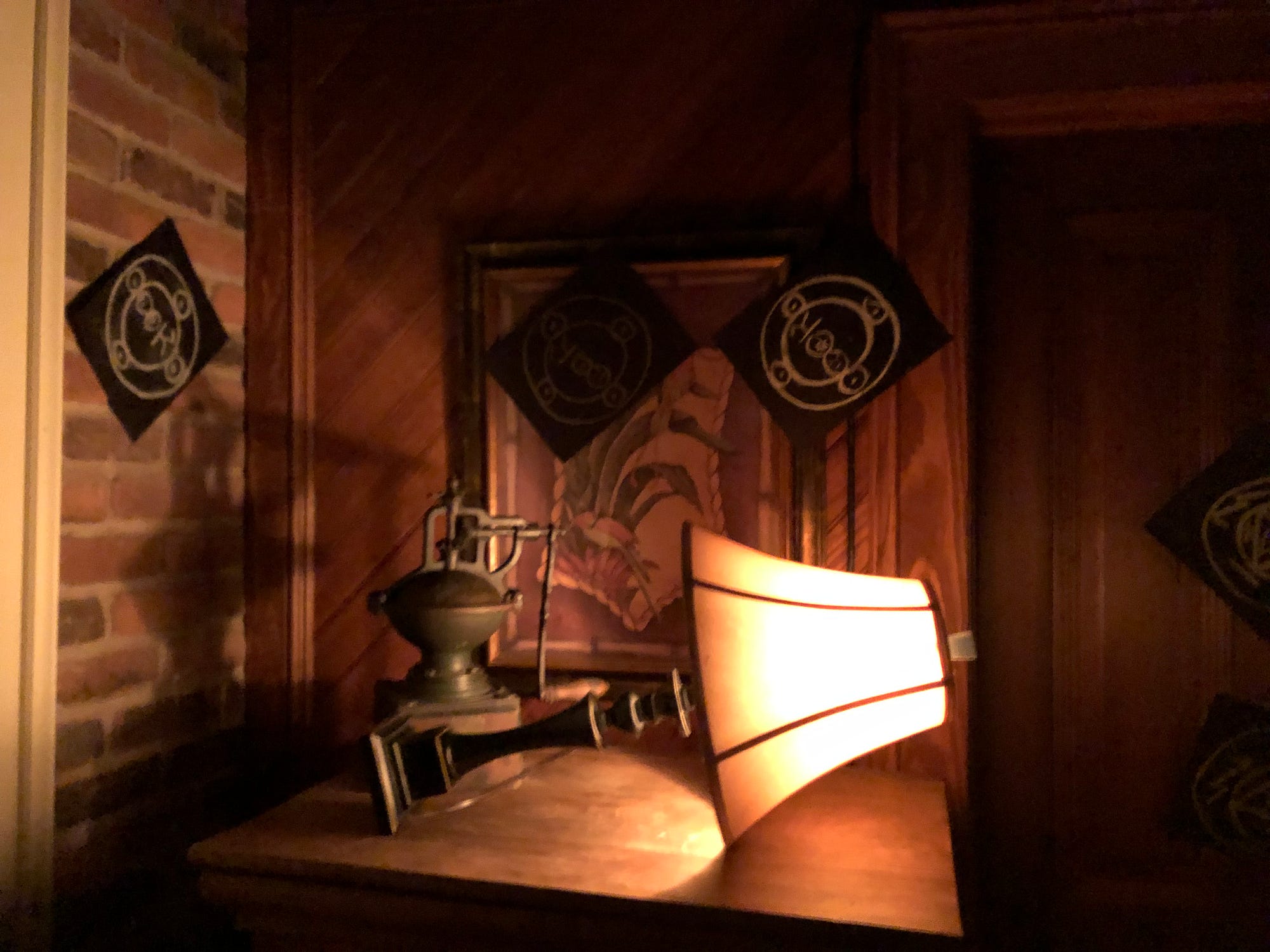
The 2019 Overlook Film Festival descended on New Orleans on the first weekend in June, and NoPro was there to absorb all the immersive things.
While we’ve got interviews — video and audio — still to come and Festival Correspondent Cara Mandel has her take on the Overlook Game, it’s high time I shared my notes on the experience.
This piece is broken up into three big chunks: the Stand Alone Offerings, The Overlook Game, and more general Thoughts on the Festival. For a broader look at New Orleans in general, check out correspondent Briana Roeck’s personal journal on her 2018 trip to New Orleans, and a forthcoming NoPro Guide to NOLA which will mix excerpts from Briana’s notes with some of my own.
Let’s get into it.
View all of our Overlook Film Festival coverage:
Stand Alone Offerings
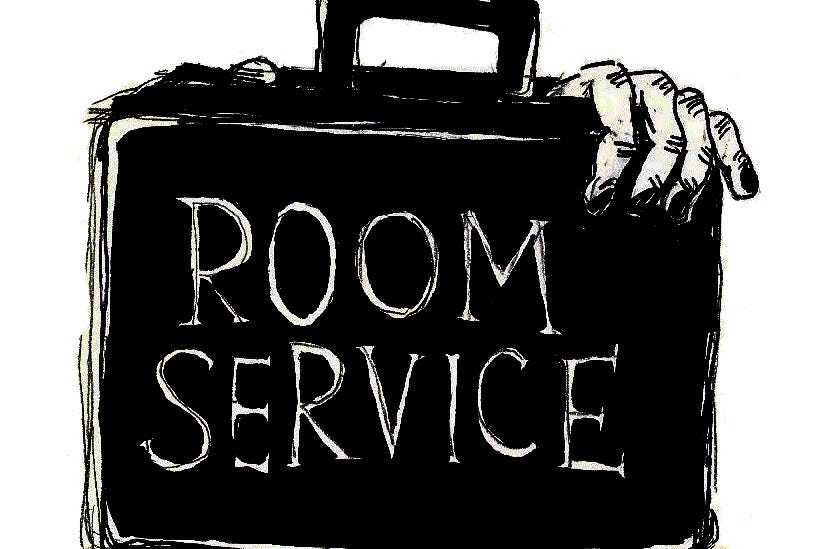
Room Service
This is my favorite thing that JFI Productions (Creep, The Willows) has ever done.
The team took one of the most talked about sequences of last year’s Creep: Awake — the tale of a sinister salesman called Mr. Black, a nightmare brought to life by writer-performer Daniel Montgomery — and sharpened it up into a site-specific bedtime story whose every minute detail feels perfectly crafted.
The Overlook edition was set inside a hotel room at the Olivier House Hotel — the de facto immersive hub for the festival — that had its own courtyard where the sound of crickets set the literal tone before guests crossed over the threshold and found themselves tucked into bed by a maid whose manner rode the line between “sexy” and “disturbing.” That tone is what often puts the “creep” in Creep.
Once tucked in, the nightmare fuel begins, with a twisted storybook “Here Comes Mr. Black” setting the stage for the arrival of the titular demonic force. Montgomery’s arrival is less a jump-scare than the all-too-cheery manifestation of something not-right entering into our plane of existence. It’s not hard to believe that Mr. Black emerged out of Montgomery’s own nightmares, and those who are impressionable may find him visiting once their eyes have closed for the night.
Clocking in at just ten minutes — give or take — Room Service was a dark delight that made the trek through the Bourbon Street crowds worth it.

Home of Enchantments
Creator-performer Ava Lee Scott’s Home of Enchantments introduces us to Belle, a woman at the end of her rope. Belle’s been running away from the past that defined her, and in the process has fallen into a dark place aided by drink and drugs. She’s turned to you — a stranger — to help rid her of these demons. Literally.
Because tonight you’re going to perform an exorcism.
Somehow, in just about a half-hour, Scott single-handedly crafted a full character arc in a piece that moved from the lobby of the Olivier to Belle’s room — lit by candlelight and featuring a large magical circle of protection drawn on the brick (!) floor. Yet it wasn’t only the space that felt otherworldly, as Scott’s performance dove deep into dark places before slingshotting back into the light. (That she managed to do this show after show for hours on end is a feat in and of itself.)
This manifestation of Home of Enchantments is intended as a kind of immersive preview of a world that Scott is developing as a scripted television series and immersive performance piece that takes place in the same world. Her theme is that “fucked up people are magical too,” and Belle’s story equates the addiction with active spiritual malaise, given form by Scott as entities that “ride” her in the exorcism’s possession sequence.
Like all truly great immersive pieces, this short plunges the participant into a role that you’re probably loosely familiar with but never imagined you’d get to take up. Even in an abbreviated form, there’s something thrilling about taking up the tools of an exorcist and coming face to face with forces beyond mortal comprehension.
None of which would work if Scott couldn’t sell it, which she does: covering wide swaths of the emotional spectrum in a way that becomes a psychic workout for the participant as much as it surely was for her. Here’s hoping that this Home reappears on the material plane before too long.
Saintsbone
A romp of a scavenger hunt in the Accomplice mode, Saintsbone is the brainchild of Andrew Preble and the DeLaporte Ventures team— who enjoys legendary status in the escape room community for the immersive qualities of their designs.
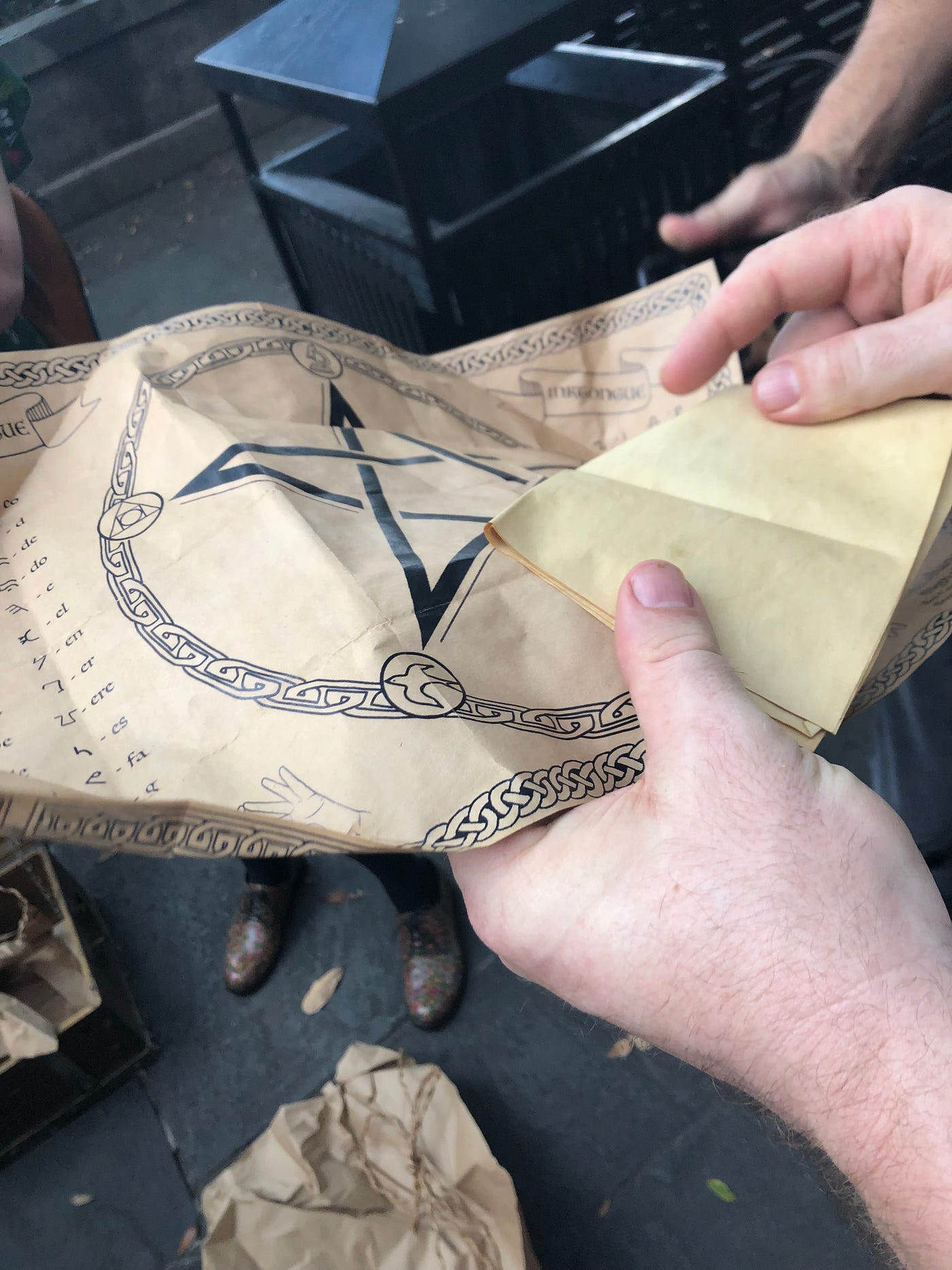
While DeLaporte’s Escape My Room is able to control every aspect of the user experience at their facility just outside the French Quarter, Saintsbone uses the historic tourist attraction as its playground. Sometimes that makes the action a bit of a metaphorical uphill climb, as there are countless walking tours and revelers crossing your path as your small team follows up on a series of clues that lead you from one wandering spirit to the next in a quest to either seal the breach between the living and the dead or tear the veil between worlds down forever.
Along the way you’ll learn a few things about New Orlean’s legends, duck into a speakeasy hidden inside another bar, and get to see that there’s more hidden in the nooks and crannies of the Quarter than tourists ever take note of.
Saintsbone made its debut at the festival, but DeLaporte Ventures is looking at offering the event as part of their overall New Orleans options. If you’re planning a group trip — or find yourself in NOLA for a convention with co-workers — look to see if Sainstbone is running. It’s a fun group activity that plays well of the Quarter’s character.
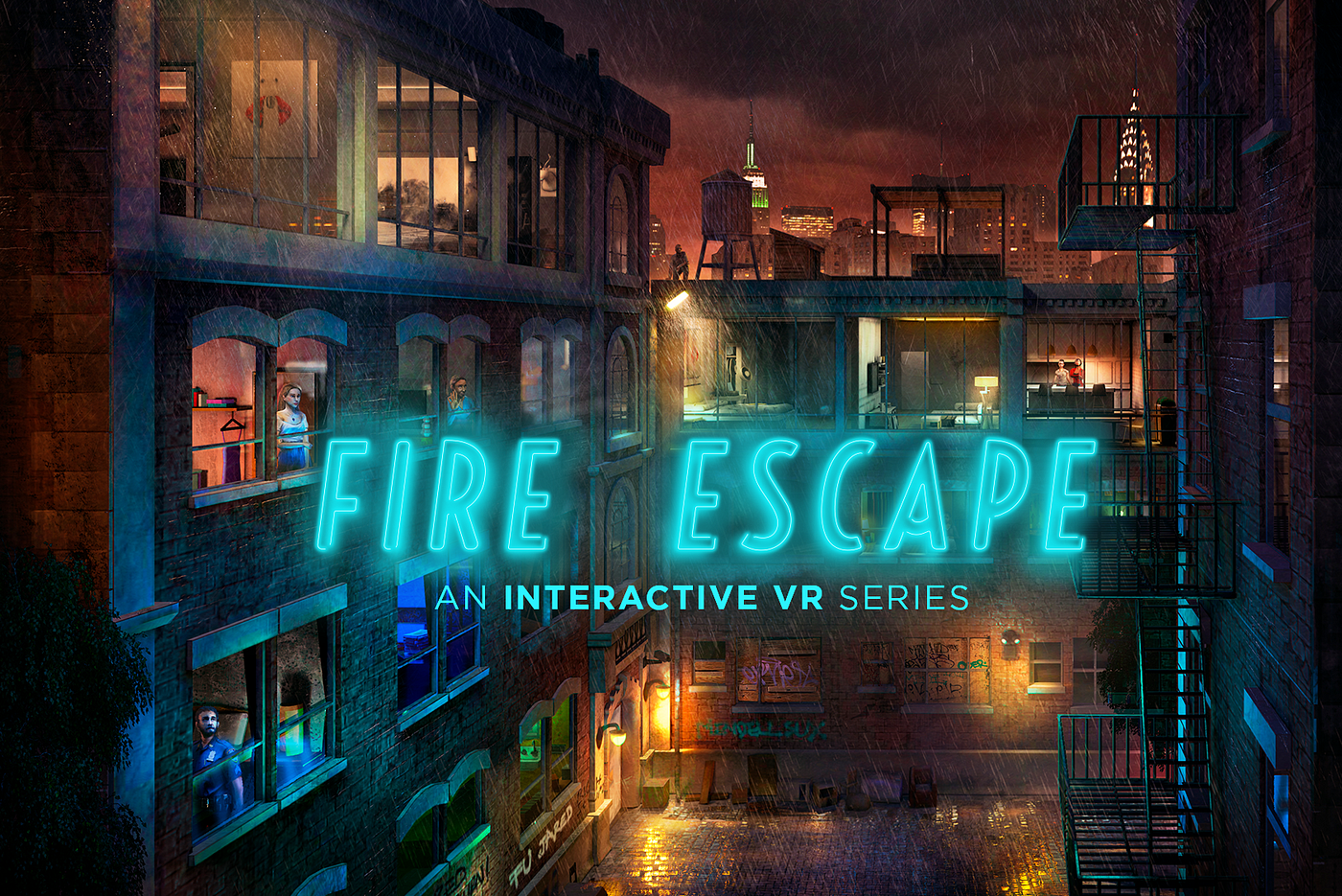
Fire Escape
This three-part series from iNK Stories, whose HERO was the talk of Sundance and Tribeca in 2018, is an interactive VR thriller modeled in part after Hitchcock’s Rear Window.
Fire Escape casts the player as a voyeur who watches as a crime investigation unfolds in the building across the street, with simultaneous narratives unfolding that require the player to chose to focus their attention wisely, less they miss a critical clue. A branching narrative can lead to multiple endings that might even spell doom for the player.
The piece plays wisely with the limitations of three-degrees-of-freedom VR, and cleverly frames all the interactions as uses of a cellphone: even down to using emojis to communicate intent to the in-game characters.
This is a highly polished narrative that I suspect would hold up to a couple of run-throughs, but even then the form is more interesting than the content. While there’s themes of gentrification, corporate greed, and clear tension between law enforcement and the disenfranchised, the “more telling than interacting” format is strained by the physical distance that the Rear Window conceit enshrines. Even with great mocap and solid voice acting, there’s only so much that can come through action figure sized characters.
Get Noah J Nelson’s stories in your inbox
Join Medium for free to get updates from this writer.
SubscribeSubscribe
Still: students of the form who have access to Google Daydream should check it out, and keep an eye open for the piece’s arrival on other platforms.
Pumpkin Pie Show One-on-Ones
Offered up as one of five options for All Access pass holders — of which one could only pick four — this was a solo session with Clay McLeod Chapman, the storyteller behind on a perennial Overlook favorite: The Pumpkin Pie Show.
Clay is a fantastic storyteller — just top notch. The one-on-one session was a treat in and of itself, and likely even moreso for those who are regulars at the festival and used to a stage show version of the storytelling.
It’s not really immersive in the sense that you or I might use the term, but who doesn’t want a creepy tale from a master storyteller all to themselves?
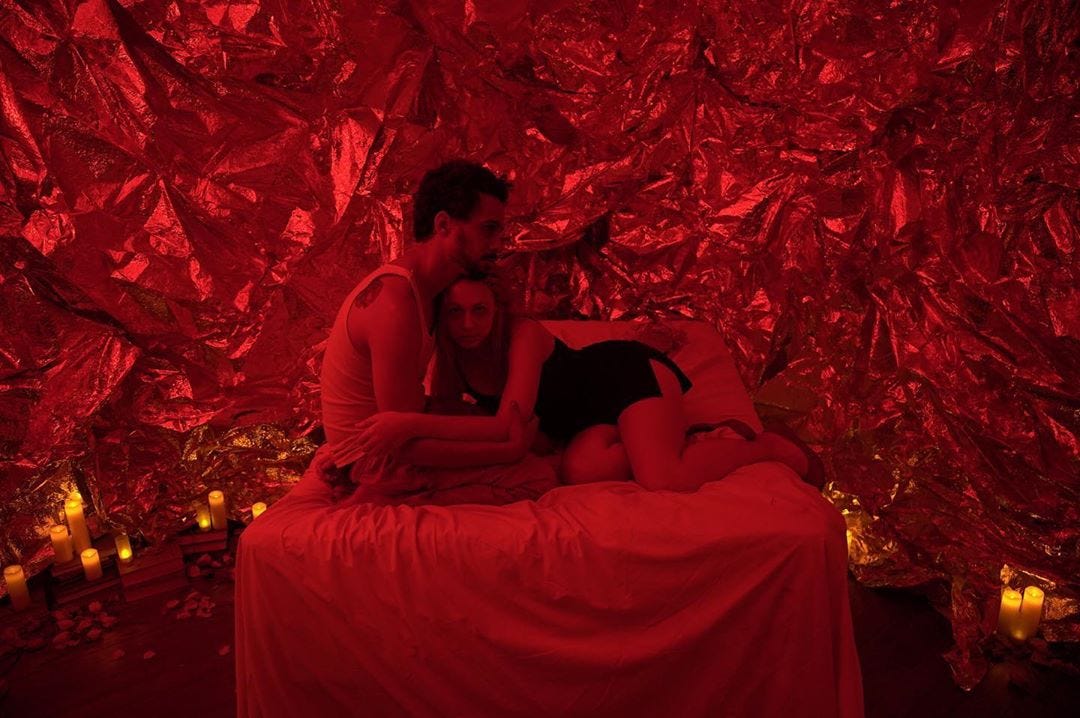
The Overlook Game
All of Them Witches (All Access Edition)
In immersive circles the most buzzed about part of any overlook is The Game.
It’s said just like that too: “The Game.” You can hear the capitals when past players speak of it.
Originally begun at a predecessor festival, The Game, is spoken of by its most ardent fans as a fully fleshed out alternate reality experience consisting of puzzles, character encounters, and strange happenings around the festival at all hours of the day and night. The Game has developed a dedicated following inside the Festival, and this year those players were encouraged to get a newly developed Platinum Pass for the festival (priced at $650 dollars, compared to the All Access $360 pass) which allowed the Festival to dedicate more resources to aspects of The Game.
The Festival also went all out in recruiting top talent to make the game, which is produced by Mali Elfman. This year an all-star team was put together, with Eric Hoff & Eva Anderson on writing duties, Tommy Honton on puzzles, and the production team of E3W (Austin & Aaron Keeling and Natalie Jones) directing the beast.
My own experience of The Game mapped to what was made available to All Access badge holders. (For a take on the Platinum track, check out Cara Mandel’s forthcoming piece.)
The story, from my point of view, followed a brother and sister artist duo Anais and Pierre — she the conceptual sculptor, he the filmmaker — who had come back home to New Orleans to start their art careers anew. They bought a house out in the Garden District to start up their practice, and in so doing ran afoul of a coven of witches.
All of which might have something to do with a series of bodies that had washed up in the river, mysteriously drained of life.
Of course, not everything in an occult mystery is what it appears to be at first — if at all — and after meeting Pierre, the young filmmaker, in the lobby of the Olivier House Hotel, we were treated to his short movie. The arresting little piece felt like the cursed video in The Ring, and it set a high bar on the tone of what was to come. At the close of the screening one of them witches showed up to threaten our little assembled group. She hustled us out.
I don’t *think* that you will die in seven days if you watch this.
By this point we had been given a few sheets of paper that held clues which would lead deeper into the mystery. The Game is constructed to be playable solo, but seems to function best as a group effort. Unfortunately for me. the group that I had on-boarded with happened to be one that was also producing work in the Festival, so they wouldn’t have much time to engage with the puzzles and set pieces that made up the storyline.
Two things made my own experience of The Game rockier than I would have liked: first was my own schedule. While I optimized for immersive, the nature of The Game’s set pieces meant that there were long periods of self-directed time which could have been spent on watching movies or checking out the VR lounge, punctuated by periods of time when I was glad I hadn’t made a tight screening schedule. Unfortunately things are structured so that you don’t know when those periods of time are until the day of. More than one big set piece was set up a twenty minute car ride away from the French Quarter, and that added to the amount of time required to participate in those aspects of The Game. For those who don’t go to a lot of film festivals: having a screening gameplan is pretty much a requirement. These two aspects are functionally “irresistible force” and “immovable object.”
The upside is that the two main set pieces I saw before the finale were spectacular, with the Saturday trip inside Pierre and Anais’ family home a delightfully creepy and twisted journey that upped the weirdness stakes. There are few things better out of the West Coast immersive scene than the work of E3W, and these sequences did not disappoint.
The finale of the story — for those of us on the All Access track at least — was set up to be a showdown between those who had sided with witches and those of us who had been following along with Pierre and Anais — not that we had a choice as to what side of the conflict, which had some clear themes about gentrification, we were on. Badge type determined faction, as it were. From a logistics standpoint this makes perfect sense, but it wasn’t necessarily a satisfying prospect if you were expecting high levels of narrative agency.
The last set piece also had some curious side effects. On the upside: those who had held on to the All Access track were finally all in the same space at the same time, which gave the moment a social dimension that had been missing for me until then. The downside: some of the verisimilitude of the piece — which had trafficked in what felt like grounded occult imagery and practice — came apart in the close.
On the one hand was the somewhat silliness of the “protection spell” that the duo got us to create on the floor of the performance space that had been pressed into service, only to be rubbed out by the feet of Team Witches once they arrived. A tiny bit anticlimactic, as magick on a budget often must be.
The other hand was the conflation of “chaos magick” with evil/dark magic in the script. Something that 99% of the population would miss, but someone who, oh, I dunno, has been exploring the theory and craft of that practice for twenty years would notice and get pulled out of the narrative by. (Fun Fact: chaos isn’t an alignment, it’s a methodology.)
The Platnium Pass folks got a Sunday coda that wrapped up the storyline they had been following. The existence of that pass was, in part, to reward those who wanted a more intense game while getting them to provide the resources to do just that. Overlook is a volunteer run event, so they’re not exactly swimming in loot. This was the first year they Festival tried this structure and it had the effect of creating — in essence — an event within the event. Given what the legend of the Overlook game was, I found myself disappointed that my experience of it wound up being largely solitary. By not having someone(s) to bounce ideas and theories off of, some of the magic of The Game is lost.
Which leads us to…
Thoughts on the Festival
At this point, after wrestling with my thoughts and feelings on Overlook for weeks, I find myself thinking that the event is at a crossroads.
The existence of The Game, which could act as an added social layer of the event, was shuffled off a bit to the side by splitting the player base up. Since I went to Overlook for the immersive, and not the very solid genre film lineup, I found myself with a lot of time on my hands and not a lot of confidence that I could spend it wisely in a screening.
Now this would surely have been different if I had been primarily interested in horror film screenings — Overlook is a horror film festival, after all — but even then the ideal times for experiencing the ticketed immersive pieces were pretty much at the same time as key screenings. Both horror films and horror immersives tend to be best experienced once night falls.
That alone is enough to set up schedule puzzle headaches. Then throw in the game’s schedule demands (along with those 40 minute round trips off-site), pepper the film venues around a tourist area that stays densely packed at all hours, and the you’ve got an uphill battle to set forth a cohesive vibe.
Without The Game as glue, there’s not enough on the immersive track at Overlook to justify a multi-day visit. However with the immersive offerings restricted to those with All Access badges and better, multi-day is pretty much the only way to go. The Platinum Pass unlocked a nearly all-encompassing version of the game, but if the idea of the game is not your bag there’s no point in grabbing that.
So who is an All Access pass at Overlook for, then?
Well: it’s for horror film buffs first and foremost. All the better if you’re immersive-curious or if immersive is part of your media diet. If you are really into the idea of the game and can’t afford the Platinum Pass, the All Access doesn’t really do the trick. The key component, I would say, is being a serious fan of horror as a genre. Just liking horror — and as a fan of films like Audition, Ringu, and pretty much anything with a vampire in it I count myself as someone who likes horror but doesn’t identify as a fan — isn’t quite enough.
Yet even then, the schedule juggle that is created by the game, short form immersives, and spread out venues create tensions between the programming tracks that the festival organizers would do well to address. An effort worth making, given the talent they’re able to attract. One that can lead to richly rewarding people on all tracks.
Learn more about The Overlook Film Festival.
See all of our Overlook 2019 coverage.
NoPro is a labor of love made possible by our generous Patreon backers: join them today!
In addition to the No Prosceniumweb site, our podcast, and our newsletters, you can find NoPro on Twitter, Facebook, YouTube, Instagram, in the Facebook community Everything Immersive, and on our Slack forum.
Office facilities provided by Thymele Arts, in Los Angeles, CA.





















Discussion